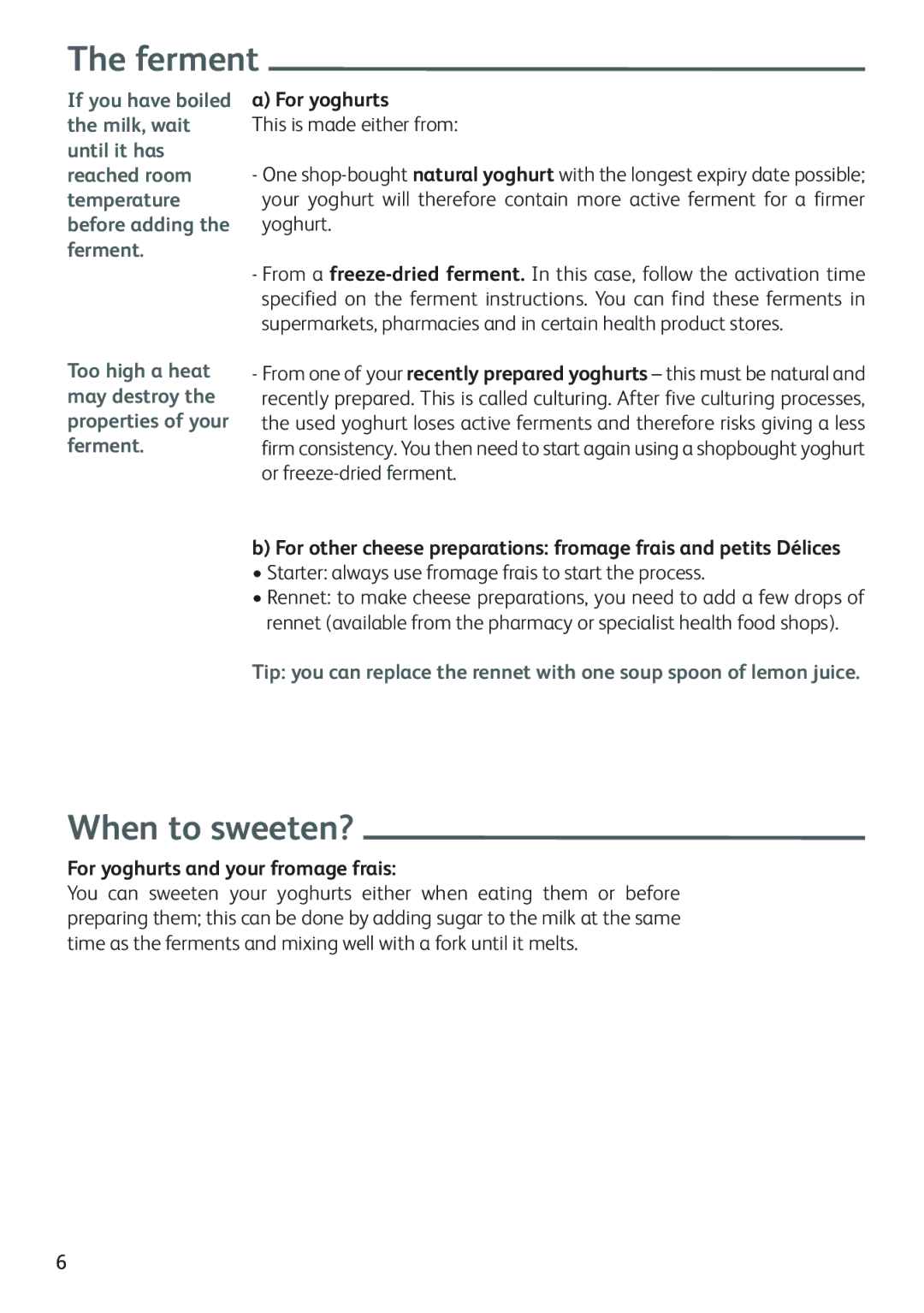
The ferment
If you have boiled | a) For yoghurts |
the milk, wait | This is made either from: |
until it has |
|
reached room | - One |
temperature | your yoghurt will therefore contain more active ferment for a firmer |
before adding the | yoghurt. |
ferment. |
|
| - From a |
| specified on the ferment instructions. You can find these ferments in |
| supermarkets, pharmacies and in certain health product stores. |
Too high a heat | - From one of your recently prepared yoghurts – this must be natural and |
may destroy the | recently prepared. This is called culturing. After five culturing processes, |
properties of your | the used yoghurt loses active ferments and therefore risks giving a less |
ferment. | firm consistency. You then need to start again using a shopbought yoghurt |
| or |
b)For other cheese preparations: fromage frais and petits Délices
• Starter: always use fromage frais to start the process.
• Rennet: to make cheese preparations, you need to add a few drops of rennet (available from the pharmacy or specialist health food shops).
Tip: you can replace the rennet with one soup spoon of lemon juice.
When to sweeten?
For yoghurts and your fromage frais:
You can sweeten your yoghurts either when eating them or before preparing them; this can be done by adding sugar to the milk at the same time as the ferments and mixing well with a fork until it melts.
6
